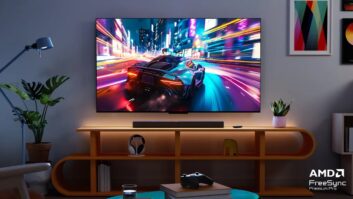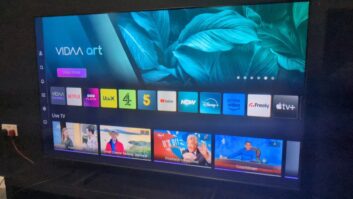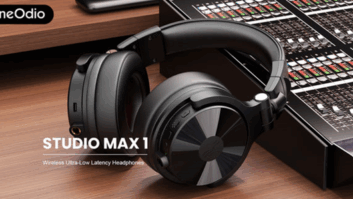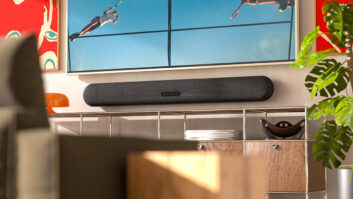New York – Amazon positioned its
$199 Android-based Kindle Fire tablet as a “vending machine” for Amazon
services and physical goods and established new opening-price benchmarks for
e-readers, analysts said of the company’s first tablet and a trio of new Kindle
e-readers.
The tablet with a 7-inch color
touchscreen and the three e-readers with 6-inch E Ink displays came in at
prices below industry expectations. The e-readers are priced at $79, $99 and
$149. Industry expectations were for an opening e-reader price of $99 and a
tablet price of $249, analysts said.
The three e-readers include the
company’s first two touchscreen models.
Analysts also said the color-touchscreen
tablet, shipping Nov. 15, would likely have little impact on Apple’s iPad 2
share but would have a major impact on the shares held by all other tablet
competitors. They cited the Kindle Fire’s price, promotion on Amazon’s heavily
traveled website, and the Fire’s proprietary Android-based user interface,
which offers simplified access to Amazon’s digital audio, video and e-book
content and to Amazon’s own app store. The tablet does not download apps from
Google’s own Android Market.
The tablet, analysts and Amazon
executives agreed, is designed primarily for the consumption of Amazon content,
though Kindle VP Dave Limp told TWICE that Amazon has reached out to Netflix
and Pandora to offer apps for the device.
Besides serving as a device to purchase
content from Amazon, the Kindle Fire could also spur sales of physical goods on
the Amazon website, said Current Analysis research director Avi Greengart. Many
purchasers could be enticed to buy the $79/year Amazon Prime service, which
entitles users to free two-day shipping on all purchases as well as unlimited
movie streaming from Amazon.
Despite the Fire’s low price
compared to the iPad’s $499 opening price, Apple has little to fear from the
Fire because the iPad accesses 100,000 apps, integrates with Apple’s own wide
selection of content, and features a
larger screen and more communications and productivity features than the Fire, Greengart
said.
The Fire, however, will have “a
massive impact on everyone else,” he said.
The Fire, Greengart pointed out, lacks
the iPad’s camera and video chat capability, though it does offer email in the
form of Gmail, Amazon said. The Fire also lacks GPS. The lack of these and
other features, such as 3G, were intended to hold down pricing while keeping key
features of most interest to consumers, said Kindle product management director
Jay Marine. Such key features include an IPS screen for a wide viewing angle
and a fast dual-core 1GHz processor.
Also to reduce cost, the Fire sports
only 8GB of embedded memory and no memory-card slot, but it comes with
unlimited Cloud storage, executives noted. Even with only 8GB of storage, the
Fire has enough room for about 23 to 24 full-length movies, Kindle VP Dave Limp
told TWICE. Amazon also reduced the number of sensors to two, one to detect
ambient light and one to automatically rotate the display into portrait or landscape
mode, he said.
Amazon officials wouldn’t comment on
whether they’re making money on the tablet hardware despite the low price, but Limp
said that the company’s “macro goal” is to make money on devices and services.
Given the Fire’s $199 price tag, if
an iPad’s price is a stretch for some consumers, they now have a much less-expensive
option with a strong brand name, said added Strategy Analytics senior analyst
Alex Spektor.
Other major-brand tablet suppliers
that have struggled in the tablet market made the mistake of pricing their
models at or above the opening price of an iPad, Spektor said.
Consumers who will buy the Fire will
be interested primarily in a “media experience,” said Amazon’s Marine. He
called the tablet “very differentiated” from others on the market because it
will access Amazon content “in a seamless way.” It’s also differentiated by its
Amazon Silk web browser, which chops seconds off the loading of complicated web
pages, largely by tapping into Amazon’s fleet of servers used for its Cloud-based
services. And it plays Flash web video, unlike the iPad.
The tablet and Kindle e-readers are
priced sharply enough that the company expects a Fire owner to also purchase a
reading-optimized Kindle, Marine noted.
The new e-readers include two touchscreen
models. They are the $99 Kindle Touch, equipped with Wi-Fi, and the $149 Kindle
Touch 3G, equipped with Wi-Fi and AT&T 3G data service. They ship Nov. 21,
both using infrared instead of LCD-screen overlays to sense touch without
reducing text visibility, the company said.
The $79 non-touch Kindle features
Wi-Fi and is already shipping.
All of the e-reader prices are with “Special
Offers,” or sponsored ads that double as screen savers. Without the sponsored
ads, the price of the non-touch Kindle goes up by $30, and the touchscreen
models go up by $40.
Amazon’s previous opening price
points for e-readers were $114 for a Wi-Fi Kindle with Special Offers and $164
for a Kindle 3G with Special Offers. Those keyboard-equipped products have been
cut in price to $99 and $139, respectively, on the company’s website.
All three e-readers are the
company’s first Kindles without hard QWERTY keyboard.
“When a market-share leader is at a certain
price, it sets the ceiling” for other major brands, Spektor said of the
e-reader pricing.
The e-reader and tablet price
points, coming in below what anyone expected, “shows that Amazon has a lot of
confidence in its business model,” which “lets them lead with hardware and make
money on the content,” added Stephen Baker, The NPD Group’s industry analysis
VP.
“What could make it a real big
success,” he said of the tablet, is whether Amazon builds up its audio and
video content services and app store to match Apple’s offerings.
The Fire’s $199 price point might
also spur Apple to adopt a dual-tier strategy as it has with the iPhone,
offering an older iPhone at a lower price than the newer version, Baker said.
The tablet is Android-based but does
not use Google’s tablet or smartphone operating systems, Amazon said. “It
doesn’t look anything like Android,” Amazon’s Marine said.
Other tablet features include a USB
port to side-load content.
The tablet doesn’t access Google’s
Android Market to download apps, but Amazon expects app developers to flock to
its platform to build its app selection from the currently available 8,000.













